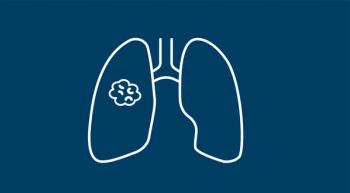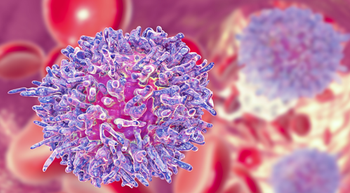
The median overall survival with intra-arterial gemcitabine was 15.7 months vs 10.1 months with intravenous gemcitabine and nab-paclitaxel.
Chris Ryan joined OncLive in November 2021 as a senior editor and became the website's managing editor in October 2023. Before arriving at MJH Life Sciences, he spent nearly a decade covering professional and high school sports—including the New Jersey Devils and the NHL from 2016 to 2021—for The Star-Ledger and NJ.com. Email: chryan@onclive.com

The median overall survival with intra-arterial gemcitabine was 15.7 months vs 10.1 months with intravenous gemcitabine and nab-paclitaxel.

Patients with Waldenström macroglobulinemia who were refractory to a BTK inhibitor achieved preliminary responses with the CD20-targeted CAR T-cell therapy MB-106.

The FDA has launched a priority review of lifileucel based on data from the phase 2 C-144-01 trial.

Mitazalimab and modified FOLFIRINOX produced a 57% objective response rate among patients with metastatic pancreatic ductal adenocarcinoma in the frontline setting.

Patients with relapsed/refractory multiple myeloma treated with elranatamab following any prior BCMA-directed therapy achieved an overall response rate of 46%.

Ciltacabtagene autoleucel improved progression-free survival vs pomalidomide, bortezomib, and dexamethasone or daratumumab, pomalidomide, and dexamethasone in patients with lenalidomide-refractory multiple myeloma.

Numerical, but not statistically significant, improvements in survival were observed in patients with TKI-resistant, EGFR-mutated, metastatic nonsquamous non–small cell lung cancer who received pembrolizumab to pemetrexed and platinum-based chemotherapy.

Adjuvant osimertinib reduced the risk of death by 51% compared with placebo for patients with EGFR-mutated, stage IB, II, or IIIA non–small cell lung cancer.

Updated findings from KEYNOTE-826 support the use of pembrolizumab plus chemotherapy with or without bevacizumab for select patients with cervical cancer.

The United Kingdom’s National Institute for Health and Care Excellence has updated their guidelines to recommend pembrolizumab plus lenvatinib for patients with previously treated endometrial cancer.

The FDA has issued a complete response letter for vic-trastuzumab duocarmazine.

Patients with PD-L1–positive, human papillomavirus 16–positive advanced, cervical cancer derived a median overall survival greater than 25 months with VB10.16/atezolizumab.

The FDA has pushed back the PDUFA date for quizartinib for select patients with acute myeloid leukemia.

Milademetan, a MDM2 inhibitor, is associated with thrombocytopenia. An intermittent dosing schedule may help mitigate that adverse event.

Patients who received pembrolizumab plus cisplatin and gemcitabine achieved a median overall survival of 12.7 months, compared with 10.9 months with cisplatin and gemcitabine alone.

Among 22 patients with cervical cancer, the objective response rate with toripalimab, bevacizumab, and platinum-based chemotherapy was 77.3%.

The primary overall survival analysis of the phase 3 ZUMA-7 trial favors axicabtagene ciloleucel over standard of care therapy.

Among 5 patients who achieved a response with JTX-8064/pimivalimab, tumor reduction remained consistent for more than 6 months on study treatment.

Patritumab deruxtecan generated activity in patients with metastatic or unresectable EGFR-mutated non–small cell lung cancer and HER3-expressing breast cancer.

Vorasidenib met its prespecified progression-free survival endpoint in the phase 3 INDIGO trial.

Patients with stage IB, II, or IIIA, EGFR-mutated non–small cell lung cancer derived benefit with adjuvant osimertinib.

The New Drug Application for nirogacestat has been granted priority review for the treatment of adult patients with desmoid tumors.

At a median follow-up of 24.9 months, imaging-based progression-free survival was not reached among patients with metastatic castration-resistant prostate cancer who had received talazoparib plus enzalutamide.

The median overall survival with frontline liposomal irinotecan/NALIRIFOX was 11.1 months vs 9.2 months with nab-paclitaxel plus gemcitabine in patients with metastatic pancreatic ductal adenocarcinoma.

Moxetumomab pasudotox-tdfk, a treatment for patients with relapsed/refractory hairy cell leukemia, will be permanently discontinued.

A combination of vusolimogene oderparepvec and nivolumab elicited early clinical activity in patients with cutaneous melanoma whose disease did not response to anti-PD-1 therapy.

Dostarlimab plus standard-of-care chemotherapy, followed by dostarlimab alone, met a predetermined progression-free survival end point in the phase 3 RUBY trial.

All 24 patients with Merkel cell carcinoma who received nivolumab plus ipilimumab responded to treatment, and 41% achieved complete responses.

Pembrolizumab plus physician’s choice of chemotherapy bested placebo plus chemotherapy in improving overall survival rates in patients with HER2-negative gastric cancer or gastroesophageal junction adenocarcinoma, regardless of PD-L1 expression.

In light of findings from the phase 3 DREAMM-3 trial, manufacturers have elected to withdraw belantamab mafodotin-blmf from the United States market.